
Controlling your Clubface
A consistent golf swing requires consistent contact of the clubface with the ball. The clubface angle determines 80% of the ball flight direction, according to launch monitor data. Your wrists directly control the clubface angle.

Once you Get into a Bad Position During Transition, It is Impossible to Recover
Amateurs think they will increase their distance if they hinge their wrists to get more lag, but actually, it is the opposite.
Look at how the player below lifts his hands, cups the wrists, and then pulls on the handle during transition – he gets into a position he cannot recover from and he cannot rotate his body as effectively. This is obviously an extreme case, but this is a frequent issue for many golfers to some extent.
Bad Example:
Extreme wrist hinging and pulling, open clubface, losing speed

Good Example: Tommy Fleetwood
Once the clubface is in a good position, you are able to rotate the body.
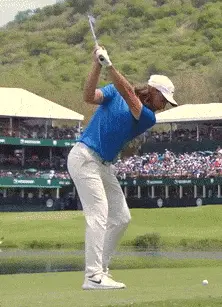
Wrong wrist and hand motion gets players into a terrible position:
- The more they hinge their wrists and pull on the club, the more they open the clubface and get the club too much in front of them.
- Then they have to stall the pivot to square the clubface, by flipping their hands before impact.
- So they actually lose speed and distance because they cannot rotate the body.
Tour players like Tommy Fleetwood are able to generate speed with their bodies because they get the clubface in a good starting position – not too open.
How Lead Wrist Extension/Flexion Influences the Club and the Clubface
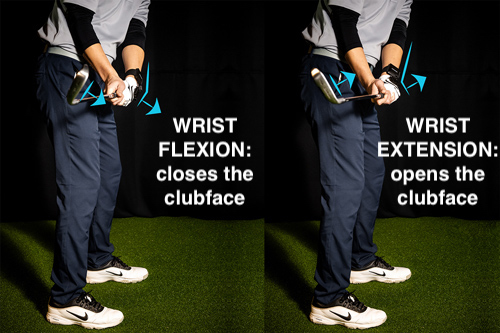
Impact on the clubface
More wrist flexion has a tendency to close the clubface, pointing it downwards and towards the target.
More wrist extension has a tendency to open the clubface, pointing it upwards and away from the target.
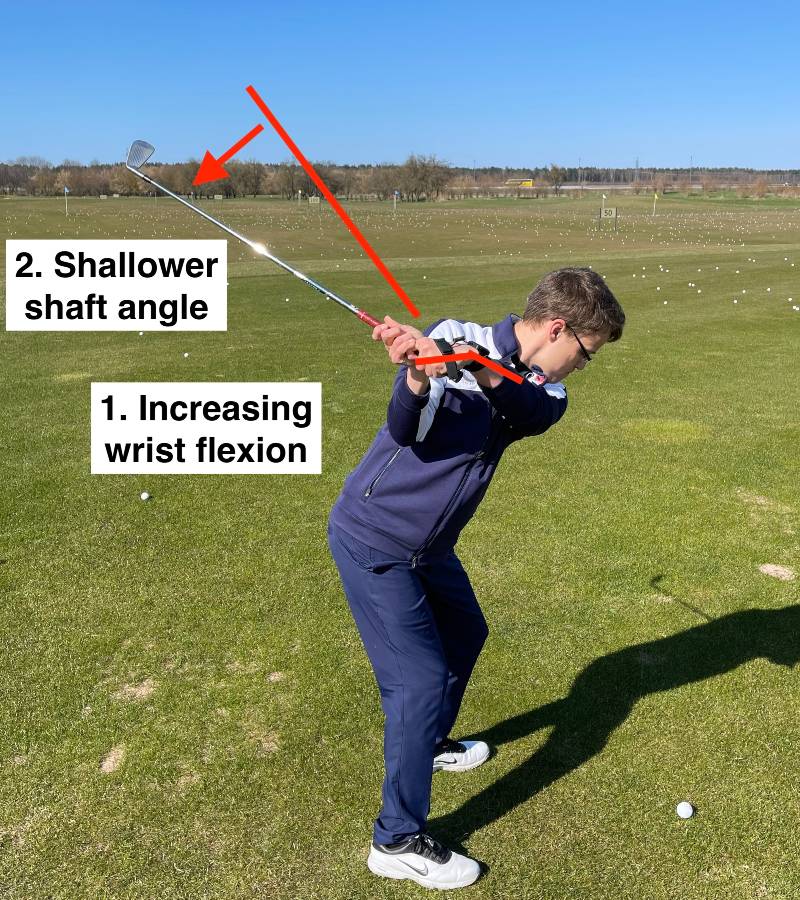
Impact on the club path
More wrist flexion in transition has a tendency to shallow the club, moving the club’s centre of mass more behind the player.
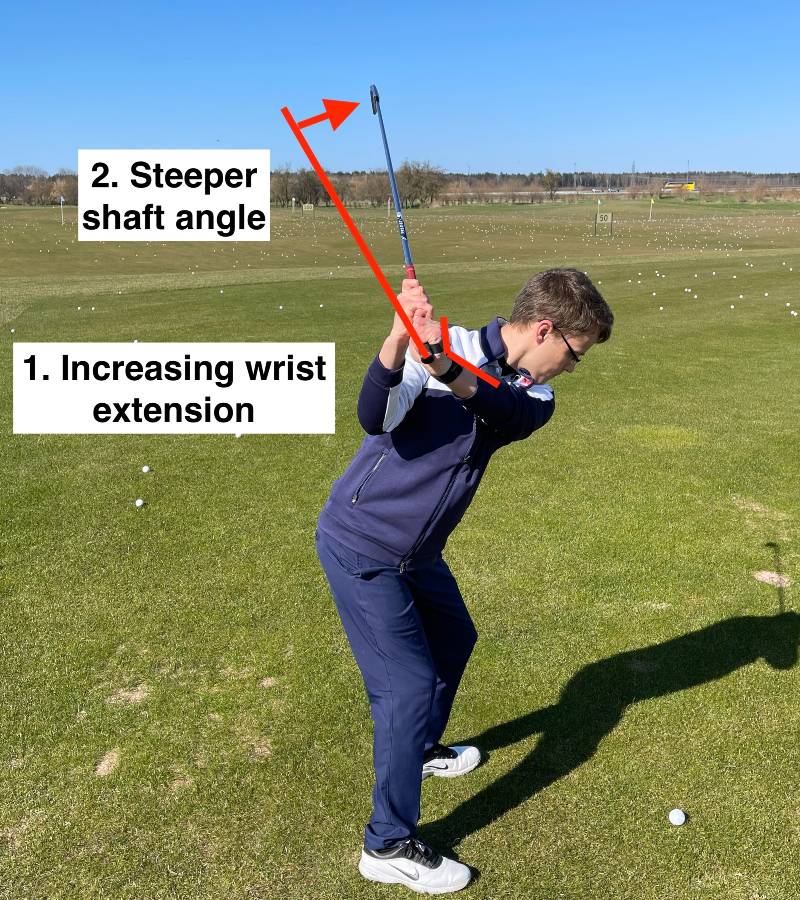
More wrist extension in transition has a tendency to steepen the club, moving the club’s centre of mass more in front of the player.
Common Poor Lead Wrist Mechanics Example
Excessive lead wrist extension is a good example of poor wrist mechanics because it is so common among club golfers. The swing motion pattern will change from player to player, but each player needs to focus on stable flexion and extension, which controls the clubface.
For beginners, you will see too much change in extension/flexion, which leads to inconsistency in your clubface control and shot direction. The more you open the face, the more you have to close it again in order to hit the ball straight. This is hard to do consistently.
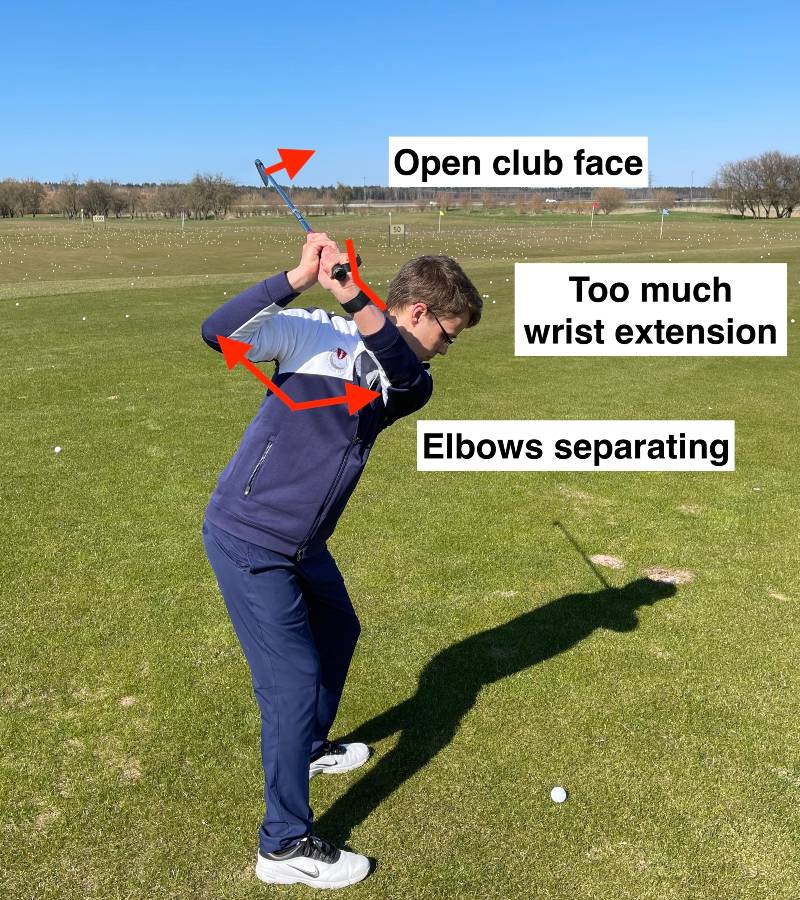
1. The player might have some difficulty rotating their shoulders (club players often have mobility issues).
As they get halfway through their backswing, they have to separate the elbows to get the club above their shoulders.
As the player separates their elbows, they push the lead wrist into extension (cupping). Often you see a massive amount of extension at the top of the backswing. The club face is wide open at the top.
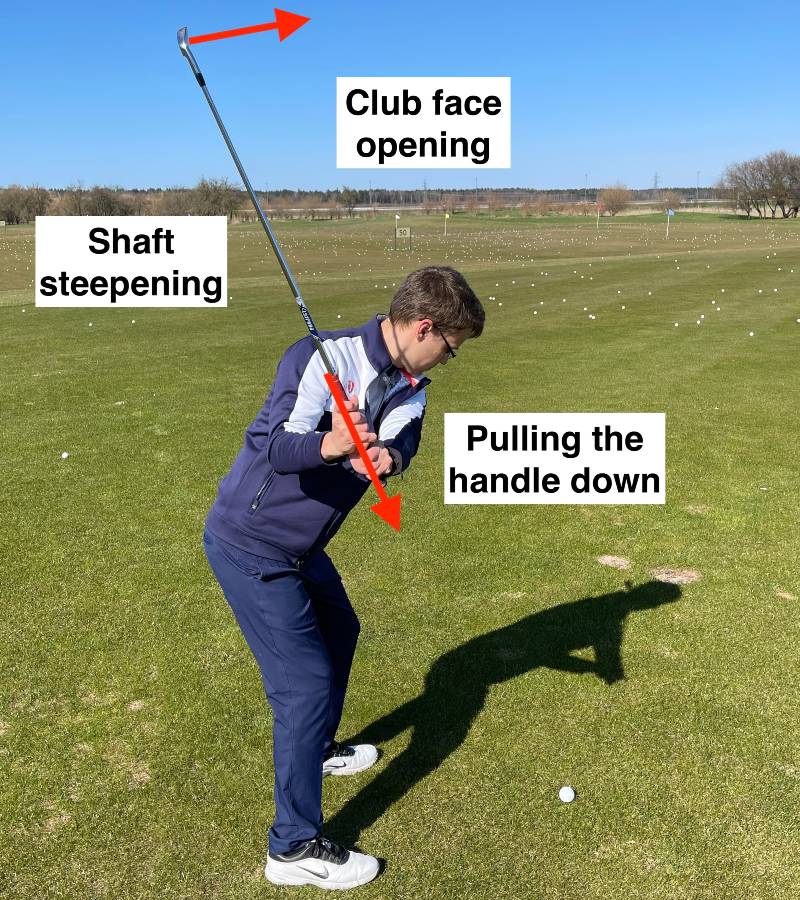
2. As they start the downswing they don’t know what to do, so they pull down on the handle and scoop it to try and square the face to the target.
During the downswing, the lead wrist extends even more, the club face opens, and the shaft steepens. Typically, the player will be coming over the top.
Often there is massive amount of extension (50-60 degrees), and while the player can try to square it, it is almost impossible to do consistently.

3. The player has to try to square the clubface, so he scoops the ball with a weak flip of the wrists. The over-the-top move leads to an out-to-in swing path and a weak slice with a lot of loft on the club.
Recommended Lead Wrist Extension Ranges
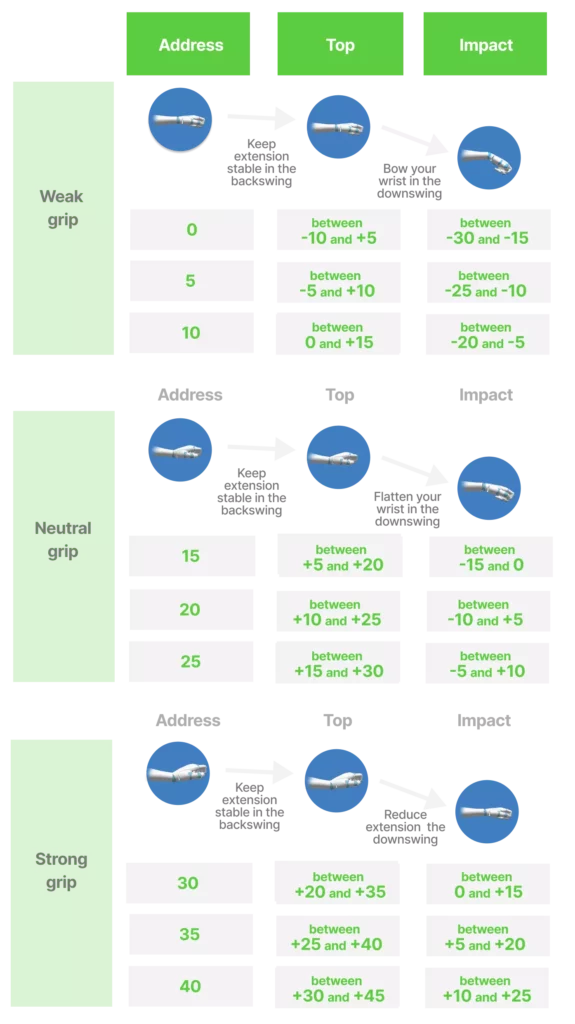
What are Recommendations Based on?
- These recommendations are developed from tour player wrist data analysis.
- This pattern can help the absolute majority of golfers to improve clubface control and become more consistent and accurate.
- PGA Tour coach Jake Thurm suggests up to 90% of golfers would benefit from this technique.
- Tiger Woods, Rory McIlroy and Tommy Fleetwood have a similar wrist motion. Now you can learn it as well!
These benchmarks are based on a wrist motion pattern PGA Tour coach Scott Cowx has identified. For those familiar with the “Three Tour Player Release Patterns“, this is the pattern A-Stable Wrist Flexion/Extension. Other Tour player release patterns require exceptional body rotation capabilities that most players do not have.
In this post we explained how clubface is influenced by the extension/flexion of the lead wrist and introduced you to typical poor lead wrist mechanics. Now it is time to start working on correcting the wrist mechanics together with HackMotion!

